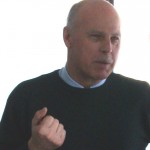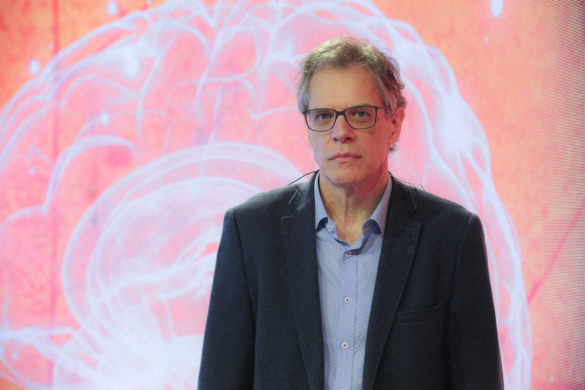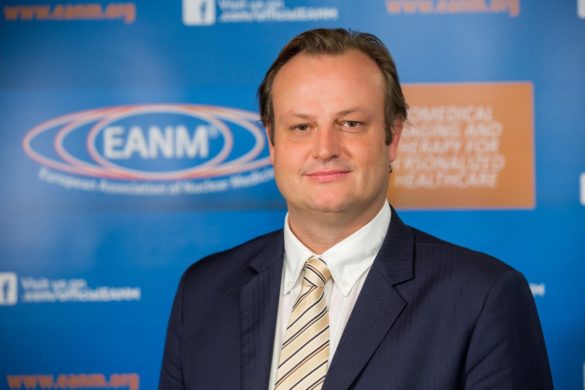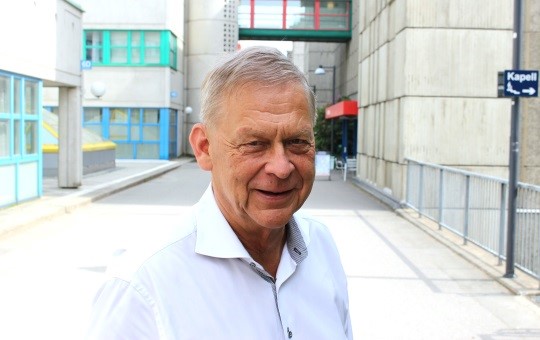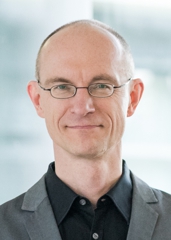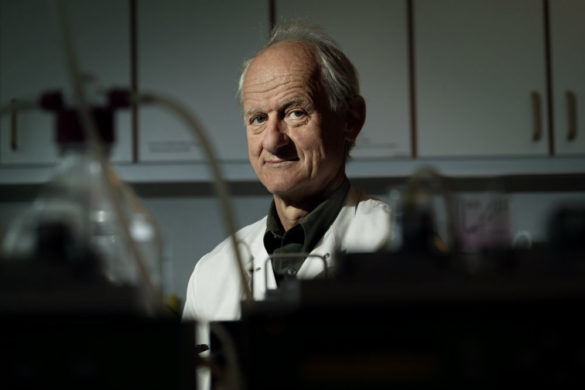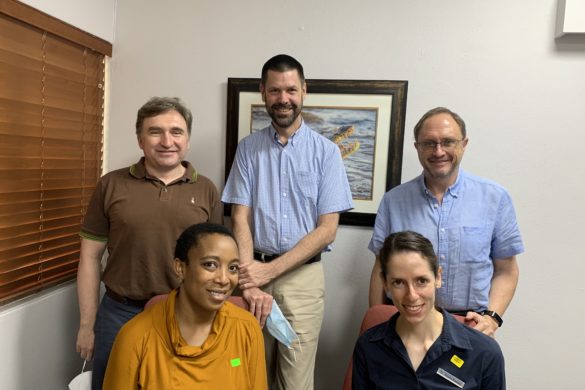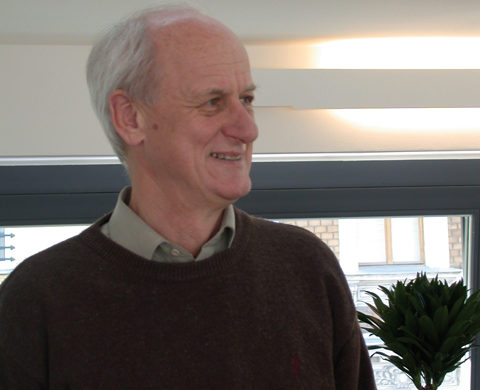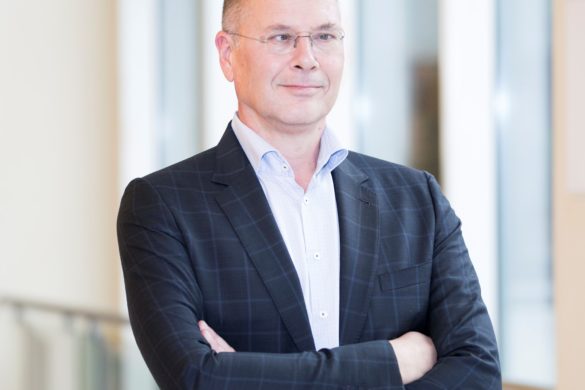Advancing neurology and neuroscience, the increase of brain disorders and the challenge for more brain health are hot topics in the general panorama of science and health.
Gian Luigi Lenzi (GLL): How does the World Federation of Neurology (WFN) approach/work towards these topics?
Wolfgang Grisold (WG): The WFN unifies 113 members from all regions of the world. We have members with highest standards and also countries with lower standards and even lacking neurological institutions. The WHO brain atlas by Prof Aarli (Atlas: Country Resources for Neurological Disorders) reflects this diversity and also defines that the epidemiology of neurologic diseases and needs differs worldwide. It seems that in the countries in need seizure disorders, infections and stroke dominate, whereas a different profile prevails in Europe and the US.
Progress in neurology needs the awareness of public institutions, health organisations and patent advocacy. Therefore, we work closely with the WHO, who is equipped with tools of public health and instruments for these tasks. Currently, we are also working on a new approach, namely the development of a WFN Specialty Network which will support the collaboration of specialist societies as MDS, Stroke, and ILAE in the worldwide education jointly with the WFN.
GLL: In the age of globalisation, can you please summarise the educational role of the WFN, a worldwide organisation, for European neurologists and the readers of Neuropenews.
WG: The WFN education committee has a long tradition within the WFN and is trying to promote education in neurology worldwide. The WFN activities of the education committee do only marginally affect Europe as this area has been covered diligently by the EFNS.
Generally our goal is to establish a common standard for the education of neurologists around the world. In pursuing this mission we have developed various approaches focusing on specific needs.
One robust and well known activity of the WFN is “Continuum” which is produced by the AAN and is distributed worldwide according to the income of the country. This magazine is an initiative of the AAN and provides up to date educational and CME material. The overall positive effect is that the societies receiving Continuum need to discuss the contents with their members, which has strong educational effect and report back to the WFN.
Another successful attempt to implement neurological education is the Honduras initiative of the WFN which introduced neurological education in Honduras and presently many projects and developments are initiated and encouraged in Africa. One project I want to point out is the Turkish initiative, whereby the Turkish society invites 2 young neurologists from Africa to stay in Turkey and be introduced to the excellent Turkish neurology services. Other activities are grants, congress attendance (Travel fellowships) and teaching courses locally and during the WFN congresses.
A particular initiative is the development of WFN accredited Teaching Centers, where local teaching centers (e.g. in Africa, but potentially also in other countries) should be training centers of excellence under the auspices of the WFN. Their aim will be to provide an excellent training standard and fulfill the needs for neurologists in the respective reasons.
Education will also need more support from electronic media. The website of the WFN has many new facilities needed to implement electronic learning. Regular educational articles possibly open access publications, video support and electronic training courses are future goals.
The UEMS/EBN (http://www.uems-neuroboard.org/ebn) European board examination, which has been developed based on cooperation between the UEMS/ENS and EFNS and has been successfully held at the ENS meeting in Barcelona in June this year is now open not only to European candidates but also worldwide. This could be an interesting future cooperation between the UEMS the EAN and the WFN.Finally, there are positive examples of fruitful cooperation with the EFNS and the African teaching courses are one of them. Possibly also the e-brain platform could be a future cooperation between European neurology and the WFN. This initiative is already in an advanced stage of development and also the WFN and its many member states could add interesting topics and aspects.
GLL: EFNS and ENS becoming one new society – the European Academy of Neurology (EAN) – will be a major achievement. How do you and the Austrian Society of Neurology view this co-operation?
WG: For us, the formation of the EAN is a long awaited development, and we feel there is a great potential from both merging societies to develop into a larger one. The merging of the philosophies of a federation (EFNS) and a society based on individual membership (ENS) will need some synchronisation, but we expect that the many new tasks awaiting EAN will increase the speed.
Europe needs a strong neurological society in support for research and improvement of neurological concepts as well as the political strength, experience and insight to foster neurology in all parts of Europe. This includes also interventions in patients with stroke, who are a true interdisciplinary task. Despite the development of the past 2 decades, need for development of neurological structures and the availability of modern and often expensive drugs is still unequal in Europe, in particular in the former East European states.From the point of the WFN the EAN will hopefully follow the EFNS as the “Regional world federation society” and the excellent cooperation which is not only focused on the WCN 2013, but on joint courses in Africa and on the support of the WFN by Europe will be continued. For me personally continuation means the further identification of future sustainable and viable joint projects.
Austria always had strong links with the EFNS but also many Austrians are individual members of the ENS and Austria has also hosted an ENS congress in Vienna. Based on my experience the general opinion in Austria towards the EAN is a very positive one. In addition Austria has many traditional links with Eastern Europe and many departments and persons have been engaged in the strong efforts of EFNS to help and support Neurology in the new European states of Eastern Europe in particular with the “department to department” exchange programme, which will hopefully be also a future EAN programme.
GLL: In 2014 the EAN – European Academy of Neurology – will be reality.
Do you have suggestions for enhancing the co-operation between the EAN and the World Federation of Neurology especially when considering the educational challenges towards brain health?
WG: There are many opportunities waiting for further cooperation. The EAN yields a great potential in scientific aspects, manpower and also economical background. The European societies have fulfilled many tremendous tasks in large areas as previous Eastern Europe (“reform states”) and North Africa; in this context, the joint African teaching courses need to be highlighted. This potential waits to be further enlarged.
There are also many “political” tasks ahead which have been managed well in Europe as the European Brain Council and also close connections with patient organisations in particular with the EPDA.
The WFN on the other hand has close links with worldwide organisations as the WHO and is also lobbying for neurology on many international levels. I believe that many synergies are open and are waiting to be developed.
We must also be aware that the concept of large congresses and the unlimited funding by industry comes to an end and the future financing of scientific organisations will have to be lean. The purpose of scientific societies is not to make money but to spend money on projects, young neurologists and education and it will be important to advocate neurology and neurology services among laypersons and the public.
GLL: Is there anything else you would like to tell our readers?
WG: As the secretary of the World Congress of Neurology (WCN 2013), which will take place in Vienna, we hope that this congress will be well attended and provides a fertile ground for future cooperations. We are thankful that the EFNS will not have a separate congress this year, but partners with the Austrian society of neurology and the WFN to make this world congress possible.
We are looking forward to this event and we are sure that the plenary lectures, the scientific programme and the teaching courses will satisfy both our expectations and needs of the EFNS members.
Wolfgang Grisold is WFN Trustee, Chairman of the WFN Teaching Course Committee and Professor of Neurology in Vienna, Austria

